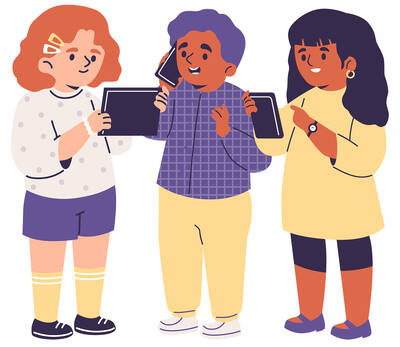In a remote area of South Australia lies Coober Pedy, a seemingly deserted mining town. But don’t be fooled by its surface appearance — around 60 percent of the town’s population have made their homes underground.
The town was first established in the early 20th century, after a teenager found opal gemstones there. This discovery transformed the town into the world’s opal mining center, drawing miners from far and wide. The town’s unique underground community took shape as a response to the harsh climate, where average summer temperatures can soar to 38°C. Using basic mining tools, the residents dug holes into the sides of hills and created underground dwellings, often referred to as “dugouts.”
Living beneath the surface has its advantages. Underground residents not only enjoy a mild 23°C all year round, but also save a considerable amount from not running air conditioning. The underground lifestyle also means less noise and reduced light pollution. Moreover, the sandstone walls’ structural integrity enables residents to create spacious rooms with high ceilings. Some locals have even constructed luxury homes complete with swimming pools and game rooms.

Photo: Wikimedia commons 照片:維基共享資源提供
The underground also contains numerous facilities for tourists to explore. To learn about the town’s mining and aboriginal history, visitors can drop by the Umoona Opal Mine & Museum, an old mine that has been converted into the town’s largest underground tourist attraction. Those who want an authentic local experience can spend a night in an underground room at the Desert Cave Hotel.
Coober Pedy is proof of humans’ ability to adapt in the face of an adverse environment. The town is indeed a one-of-a-kind place on—or below—Earth.
在澳洲南部的一個偏遠地區,有著一個看似荒涼的礦業小鎮,名叫庫伯佩地。但不要被它的表面所欺騙——這個小鎮約百分之60的居民選擇在地下建立自己的家。
這個小鎮最早建立於西元20世紀初,一名少年在那裡發現了蛋白石寶石。這一發現將這個小鎮變成了世界蛋白石開採中心,吸引了來自各地的礦工。這個小鎮獨特的地下社區是為應對惡劣的氣候而形成,夏季的平均氣溫可飆升至攝氏 38 度。居民們使用基本的採礦工具挖掘山丘的側面,創造了地下住所,通常被稱為「地下穴居」。
生活在地下有它的好處。地下居民不僅全年享受著攝氏 23 度的溫和氣溫,還節省了大量不需要運行空調的費用。地下生活方式還意味著更少的噪音和減少的光污染。此外,砂岩牆壁的結構完整性使居民可以建造寬敞的房間,擁有高聳的天花板。一些當地人甚至建造了豪華的住宅,包括游泳池和娛樂室!
地下還擁有眾多供遊客探索的設施。要了解小鎮的採礦與原住民歷史的話,遊客可以順道參觀烏穆納蛋白石礦坑博物館,這是一個老礦場,已經轉換為該鎮最大的地下旅遊景點。那些想要體驗當地風情的遊客可以在沙漠洞穴旅館的地下房間過夜。
庫伯佩地證明了人們在面對惡劣環境時的適應能力。這個小鎮確實是地球上獨一無二的地方,無論是在地上還是地下。
MORE INFORMATION
gemstone n. 寶石
dwelling n. 住所
dugout n. 地下穴居
sandstone n. 砂岩
integrity n. 完整性;操守
aboriginal adj. 原住民的
KEY VOCABULARY
1. community n. 社區;團體
The local library serves as a gathering place for the whole community by hosting various events.
當地圖書館舉辦各種活動,成為整個社區的聚會場所。
2. soar vi. 驟升;高達;翱翔
People began to move out of the city as the cost of living continued to soar.
隨著生活成本持續飆升,人們開始搬離城市。
3. mild adj. 溫和的;輕微的
Nancy dislikes the cold and dreams of moving to a place with mild winters.
南希不喜歡寒冷,夢想著搬到冬季氣候溫和的地方。
4. construct vt. 建造;建立
The children constructed a fort in the living room using blankets and pillows.
孩子們在客廳用毯子和枕頭建造了一座堡壘。
5. luxury adj. 豪華的;奢侈的
As a reward for working hard this year, Simon booked himself a three-night stay at a luxury hotel.
作為對今年勤奮工作的獎勵,賽門在豪華飯店為自己訂了三晚的住宿。
6. facility n. 場所;設施
The medical facility was equipped with advanced technology to ensure the best possible care for all patients.
這間醫療場所配備了先進技術,以確保能為所有患者提供最好的護理。
7. convert v. 轉換;變換
The old factory was converted into a gallery that displayed the works of local artists.
這間舊工廠被改建成一個展示當地藝術家作品的畫廊。
8. adapt v. 使適應;調整;改造
People who travel frequently often need to adapt to different cultures, languages and customs.
經常旅行的人常常需要適應不同的文化、語言和習俗。
9. adverse adj. 不利的;負面的
Despite adverse economic conditions, the small business managed to thrive and
expand its operations.
儘管經濟條件不利,這家小企業仍然能夠繁榮昌盛並擴大業務。
學習音檔: https://magazine.english4u.net/Magdata/menu/t6rg4
《空中美語》雜誌APP免費下載: https://www.english4u.net/apps/index.aspx
免費收聽當月《空中美語》雜誌課文朗讀及解析 !
文章由AMC空中美語授權使用: https://www.english4u.net

In an effort to fight phone scams, British mobile phone company O2 has introduced Daisy, an AI designed to engage phone con artists in time-wasting conversations. Daisy is portrayed as a kindly British granny, exploiting scammers’ tendency to target the elderly. Her voice, based on a real grandmother’s for authenticity, adds to her credibility in the role. “O2” has distributed several dedicated phone numbers online to direct scammers to Daisy instead of actual customers. When Daisy receives a call, she translates the scammers’ spoken words into text and then responds to them accordingly through a text-to-speech system. Remarkably, Daisy

Bilingual Story is a fictionalized account. 雙語故事部分內容純屬虛構。 Emma had reviewed 41 resumes that morning. While the ATS screened out 288 unqualified, she screened for AI slop. She could spot it a mile away. She muttered AI buzzwords like curses under her breath. “Team player.” “Results-driven.” “Stakeholder alignment.” “Leveraging core competencies.” Each resume reeked of AI modeling: a cemetery of cliches, tombstones of personality. AI wasn’t just changing hiring. It was draining the humanity from it. Then she found it: a plain PDF cover letter. No template. No design flourishes. The first line read: “I once tried to automate my

Every May 1, Hawaii comes alive with Lei Day, a festival celebrating the rich culture and spirit of the islands. Initiated in 1927 by the poet Don Blanding, Lei Day began as a tribute to the Hawaiian custom of making and wearing leis. The idea was quickly adopted and officially recognized as a holiday in 1929, and leis have since become a symbol of local pride and cultural preservation. In Hawaiian culture, leis are more than decorative garlands made from flowers, shells or feathers. For Hawaiians, giving a lei is as natural as saying “aloha.” It shows love and

1. 他走出門,左右看一下,就過了馬路。 ˇ He walked outside, looked left and right, and crossed the road. χ He walked outside and looked left and right, crossed the road. 註︰並列連接詞 and 在這句中連接三個述語。一般的結構是 x, y, and z。x and y and z 是加強語氣的結構,x and y, z 則不可以。 2. 他們知道自己的弱點以及如何趕上其他競爭者。 ˇ They saw where their weak points lay and how they could catch up with the other competitors. χ They saw where their weak points lay and how to catch up with the other competitors. 註:and 一般連接同等成分,結構相等的單詞、片語或子句。誤句中 and 的前面是子句,後面是不定詞片語,不能用 and 連接,必須把不定詞片語改為子句,and 前後的結構才相等。 3. 她坐上計程車,直接到機場。 ˇ She took a cab, which took her straight to the airport. ˇ She took a cab and it took her straight